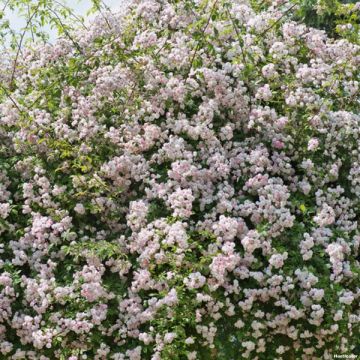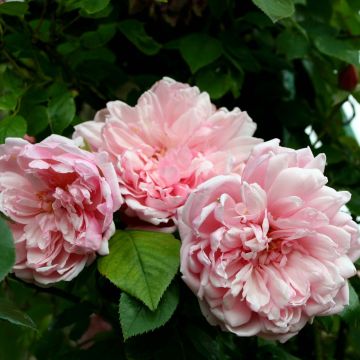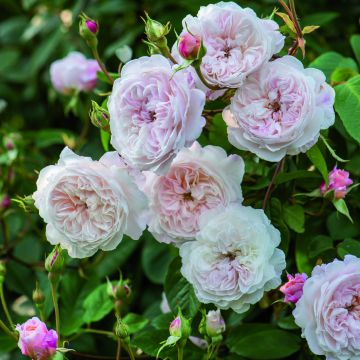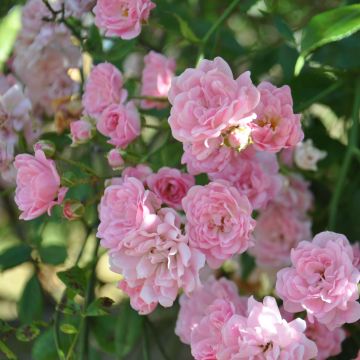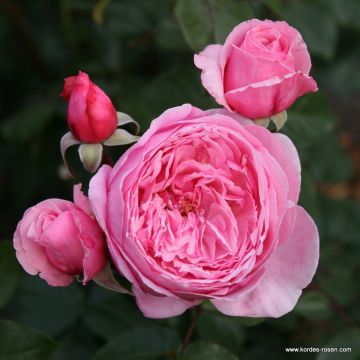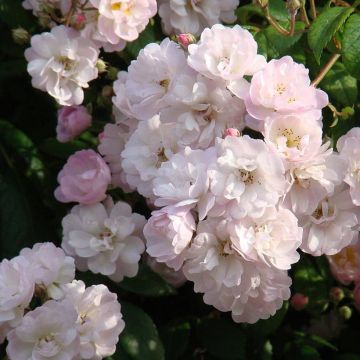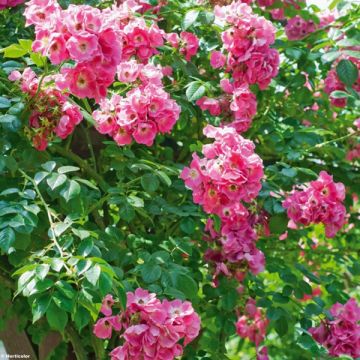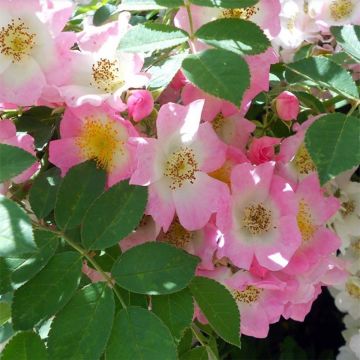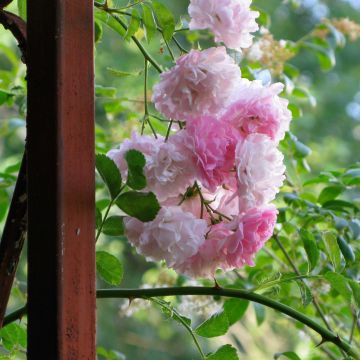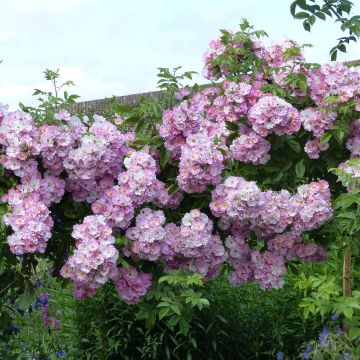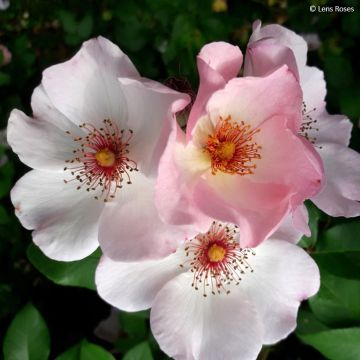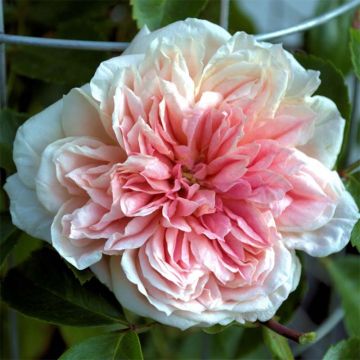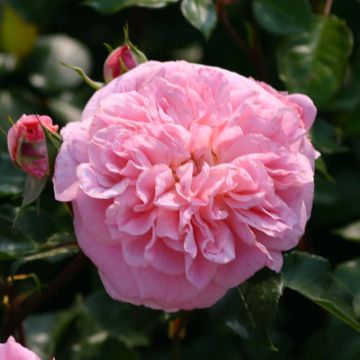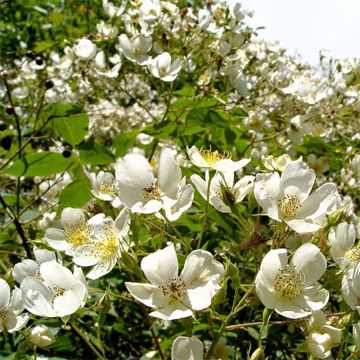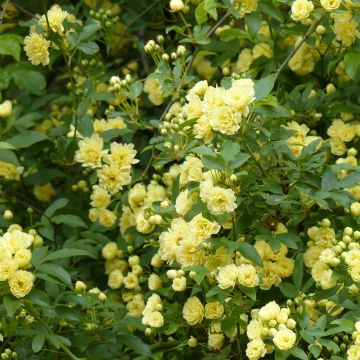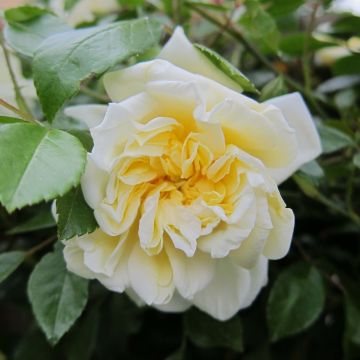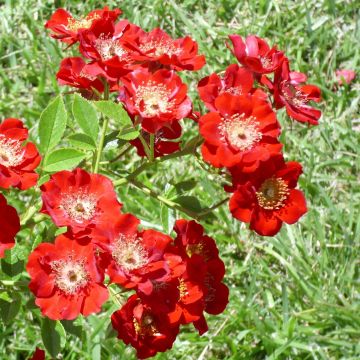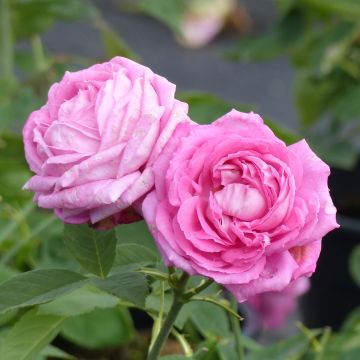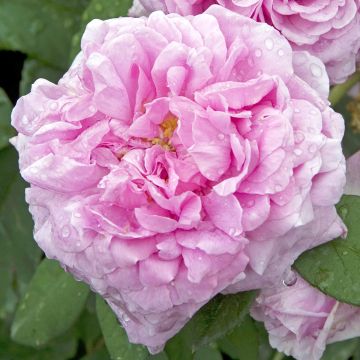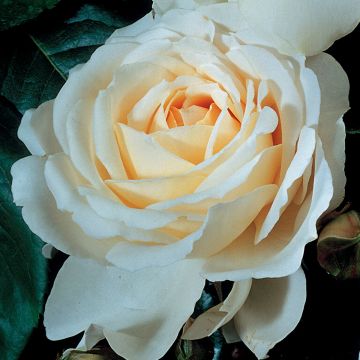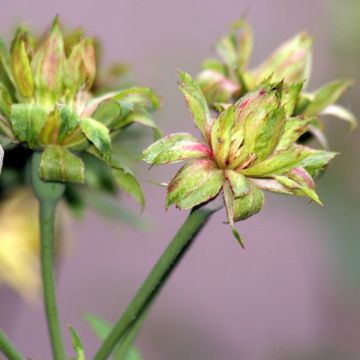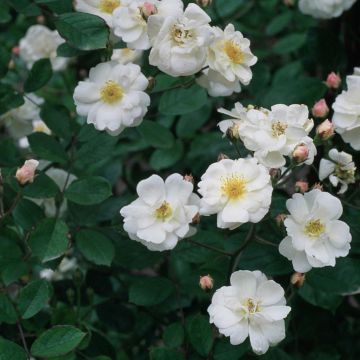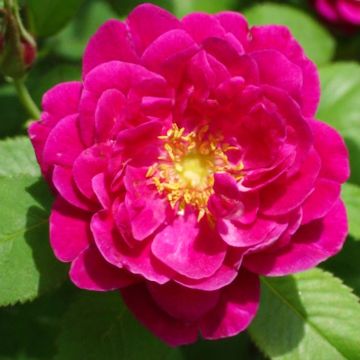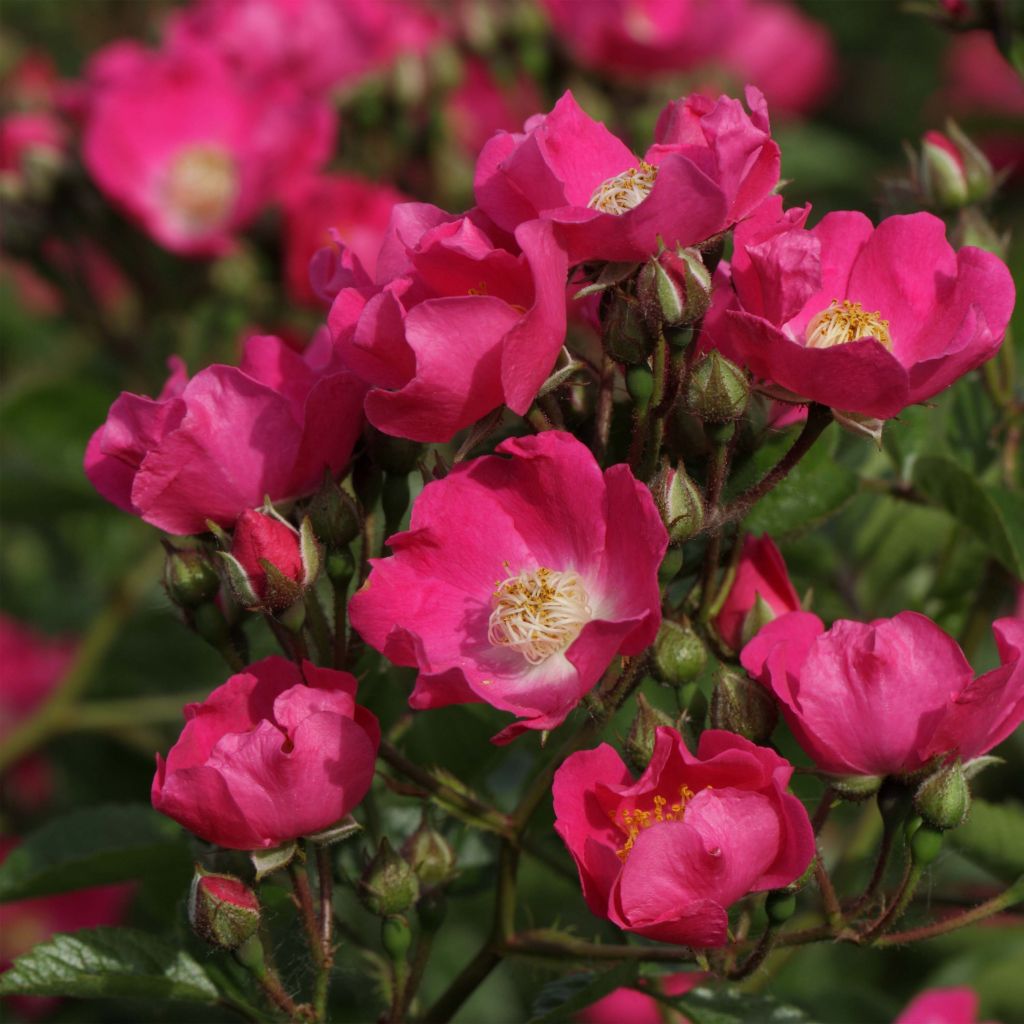

Rosa x multiflora Maria Lisa - Multiflora Climbing Rose
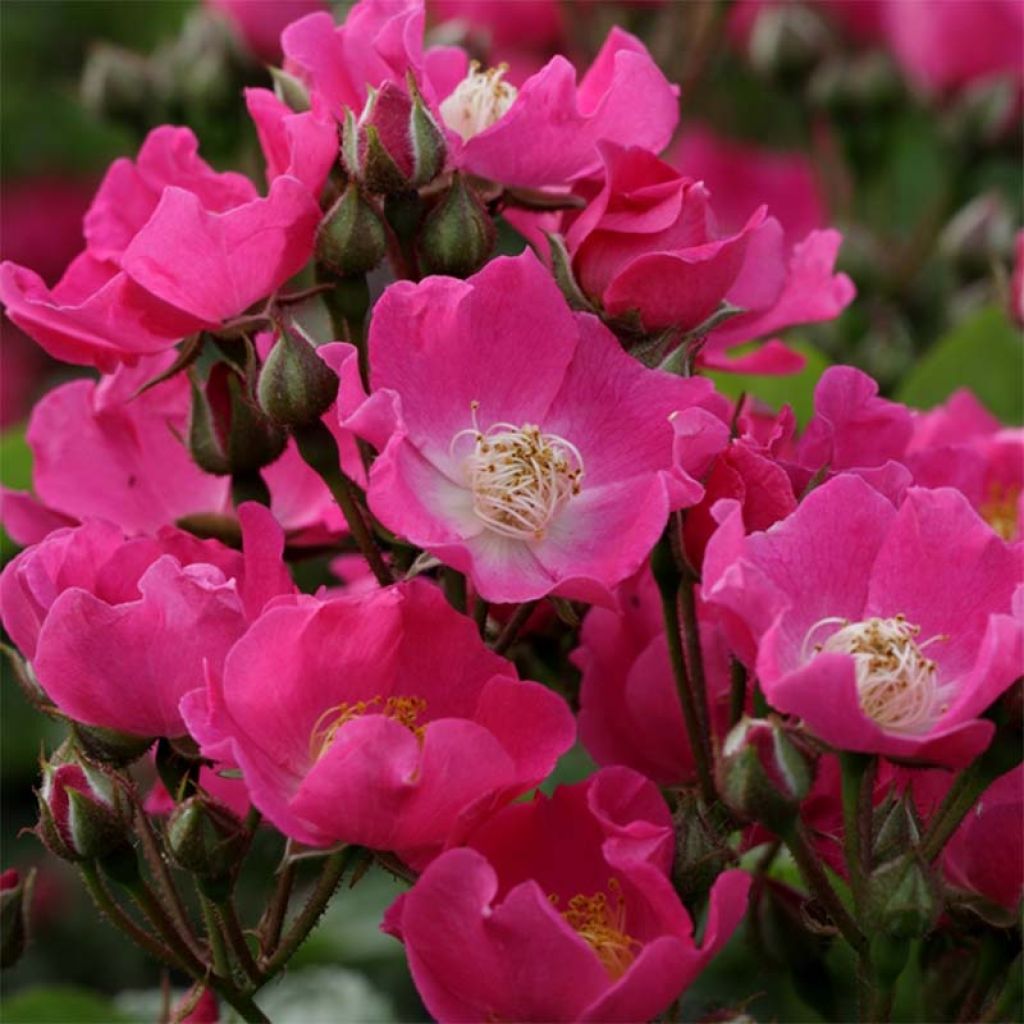

Rosa x multiflora Maria Lisa - Multiflora Climbing Rose
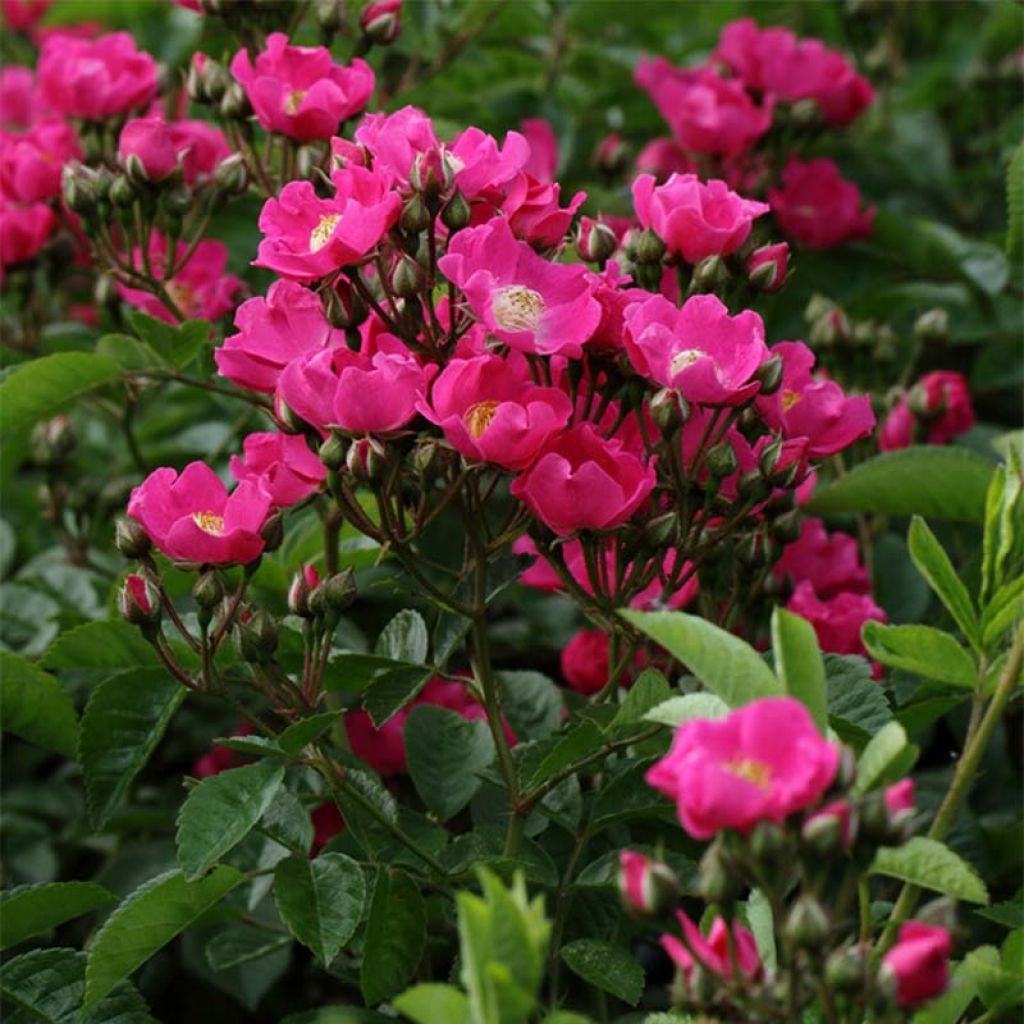

Rosa x multiflora Maria Lisa - Multiflora Climbing Rose
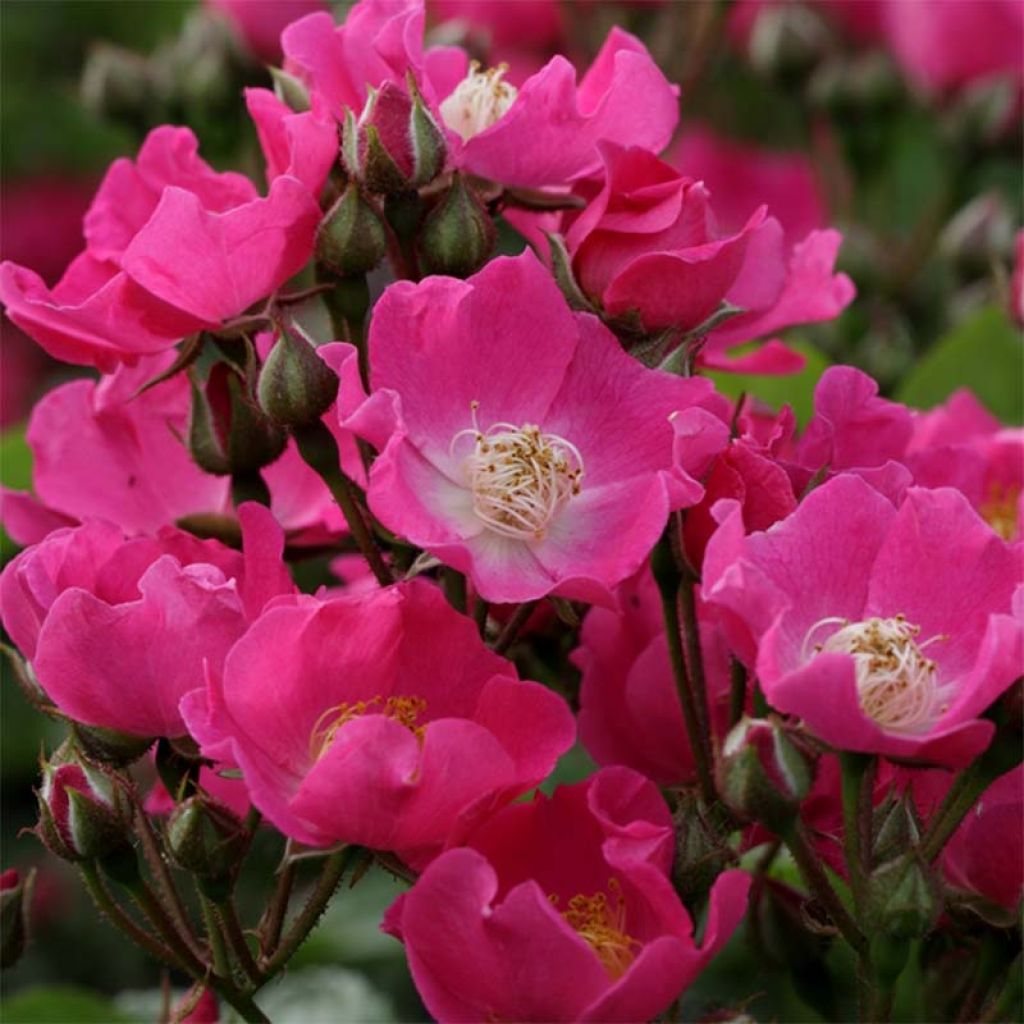

Rosa x multiflora Maria Lisa - Multiflora Climbing Rose
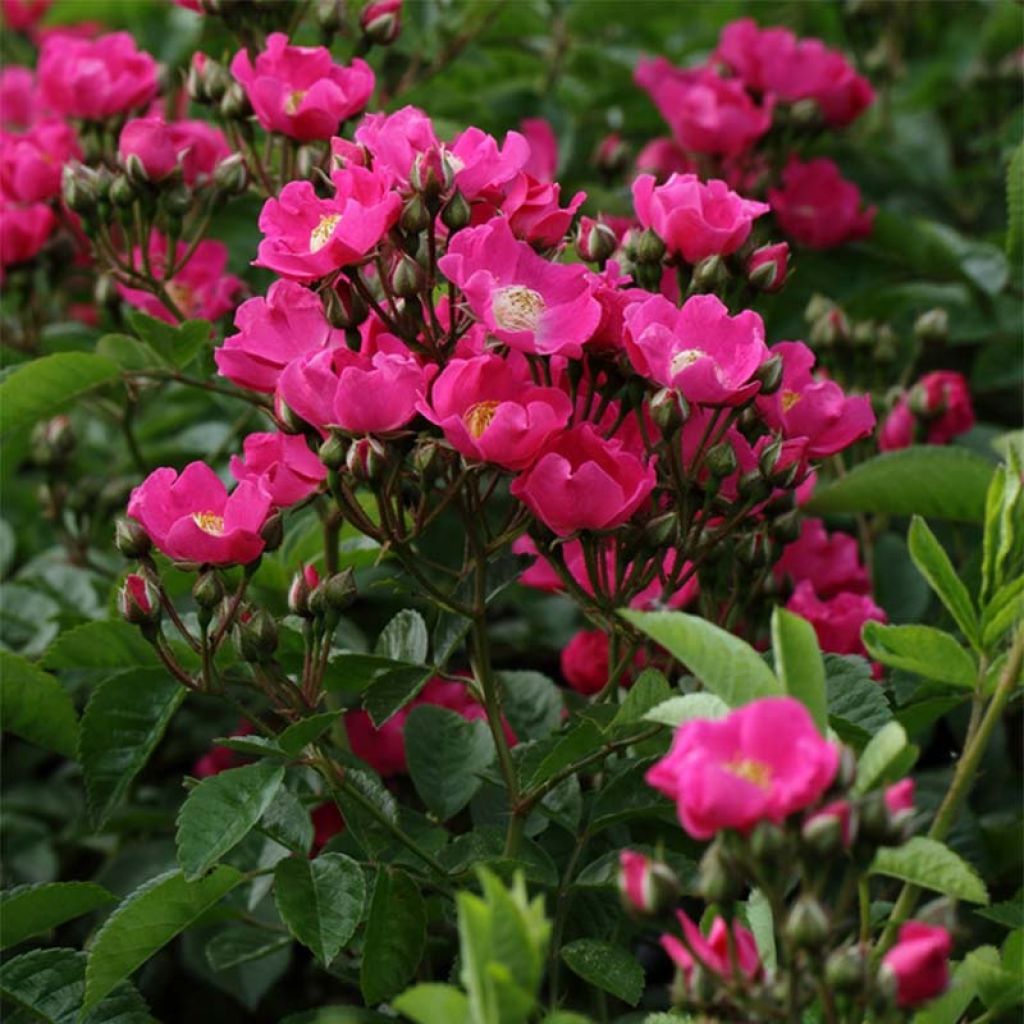

Rosa x multiflora Maria Lisa - Multiflora Climbing Rose
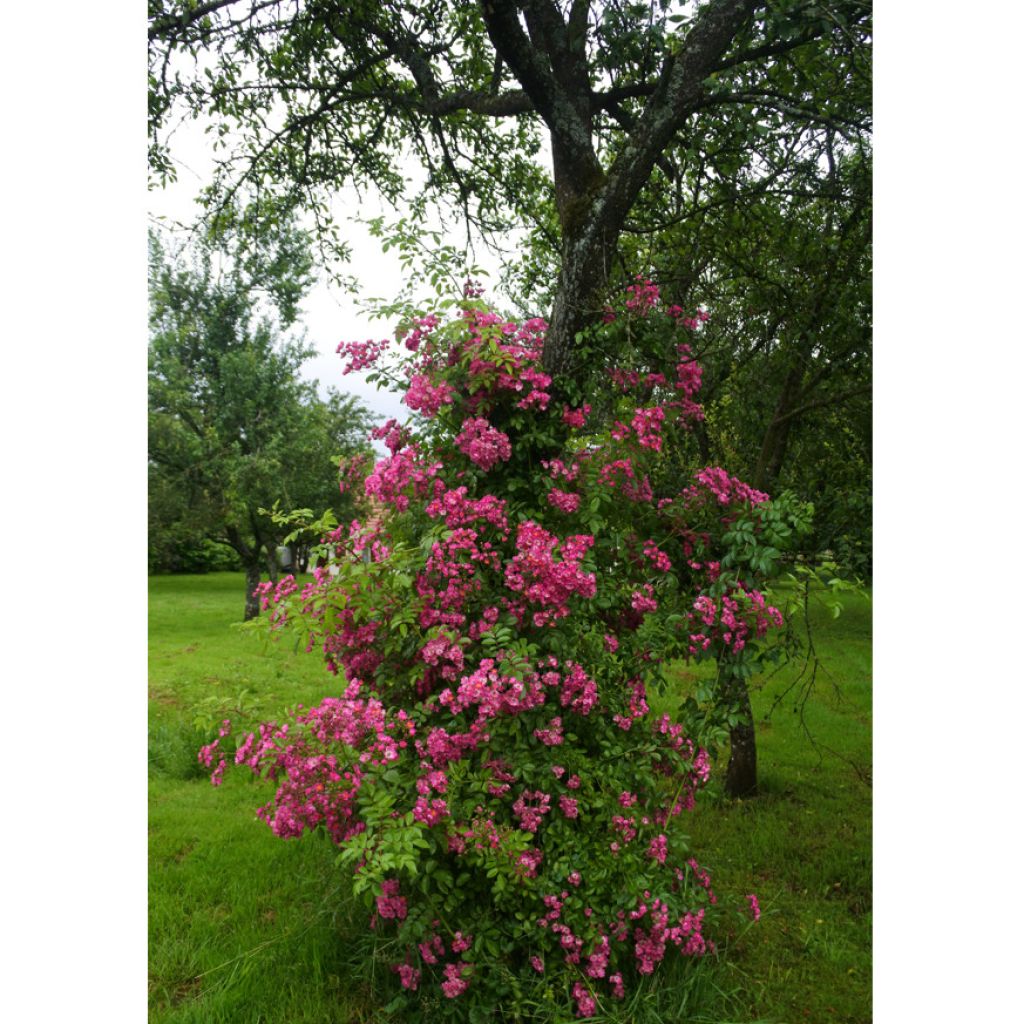

Rosa x multiflora Maria Lisa - Multiflora Climbing Rose
Rosa x multiflora Maria Lisa - Multiflora Climbing Rose
Rosa x multiflora Maria Lisa
Multiflora Rose, Baby Rose, Japanese Rose, Many-flowered Rose, Seven-sisters Rose
Why not try an alternative variety in stock?
View all →This plant carries a 24 months recovery warranty
More information
We guarantee the quality of our plants for a full growing cycle, and will replace at our expense any plant that fails to recover under normal climatic and planting conditions.
From €5.90 for pickup delivery and €6.90 for home delivery
Express home delivery from €8.90.
From €5.90 for pickup delivery and €6.90 for home delivery
Express home delivery from €8.90.
Delivery to Corse prohibited: UE law prohibits the import of this plant from mainland France to Corse as part of the fight against Xylella fastidiosa. Please accept our sincere apologies.
More information
Does this plant fit my garden?
Set up your Plantfit profile →
Description
The 'Maria Lisa' Rose, also known as Rosa x multiflora 'Maria Liesa', is a sarmentous rose bush and an excellent choice for large gardens. Its vigorous growth produces long trailing stems almost devoid of thorns, abundantly adorned with beautiful, abundant, and very healthy matte green foliage. In June-July, it is covered in a cascade of large inflorescences filled with small semi-double flowers, in a vibrant pink colour, illuminated by a white centre. Its vigour allows it to conquer trees and disguise unsightly structures, transforming them for several weeks. Depending on preferences, it can also be trained as a bush in a large free hedge, even in partial shade and in cold regions.
'Maria Lisa' is a hybrid of the climbing multiflora rose. It closely resembles its parent, inheriting the long, flexible, and thornless stems. This rose was obtained in 1925 by the monk Alfons, and introduced in 1936 by Liebau &Co in Germany. Its growth is very fast. It forms a slightly weeping, graceful shrub, reaching a height of 3 to 4 m (10 to 13ft) (more if trained as a climber), with a width of 2 to 3 m (7 to 10ft). Its arching stems arise from a stump that produces new woody climbing stems each year. The flowering is non-recurring, occurring in June-July, but is very abundant and long-lasting. The 3cm (1in) diameter semi-double to single flowers have 5 to 8 petals. They are tightly clustered in incredible abundance, displaying a vibrant, almost fuchsia pink-red colour with a beautiful white eye. The flower's centre is filled with a visible bouquet of golden-yellow stamens, attracting bees. The flowering period is particularly long in June-July, thanks to the excellent longevity of each flower on the cluster. This rose produces few fleshy false fruits called rose hips. It has dense, lush, and healthy matte medium green foliage.
If 'Maria Lisa' is one of the few creations of Father Alfonse that have survived over time, it is thanks to its good health, vigour, and lively summer flowering. Like other climbers, it's perfect for filling large spaces and giving a slightly wild look when planted above overly strict flower beds. It is an ideal companion for dead trees that it will illuminate, old fences, and ugly buildings or sheds to which it adds a charming allure. Trained on an arch near the terrace, it creates a romantic passage. As its flowering is not recurring, it can be paired with a large-flowered clematis whose summer flowering will take over until autumn. But 'Maria Lisa' is perhaps even more beautiful when displayed on its own in a short grass meadow: it creates a magnificent mass of flowers that attracts all eyes in summer. It integrates perfectly into a large free hedge, associated with other large shrubs such as hawthorns, laburnum, deciduous euonymus, or lilacs.
Report an error about the product description
Rosa x multiflora Maria Lisa - Multiflora Climbing Rose in pictures
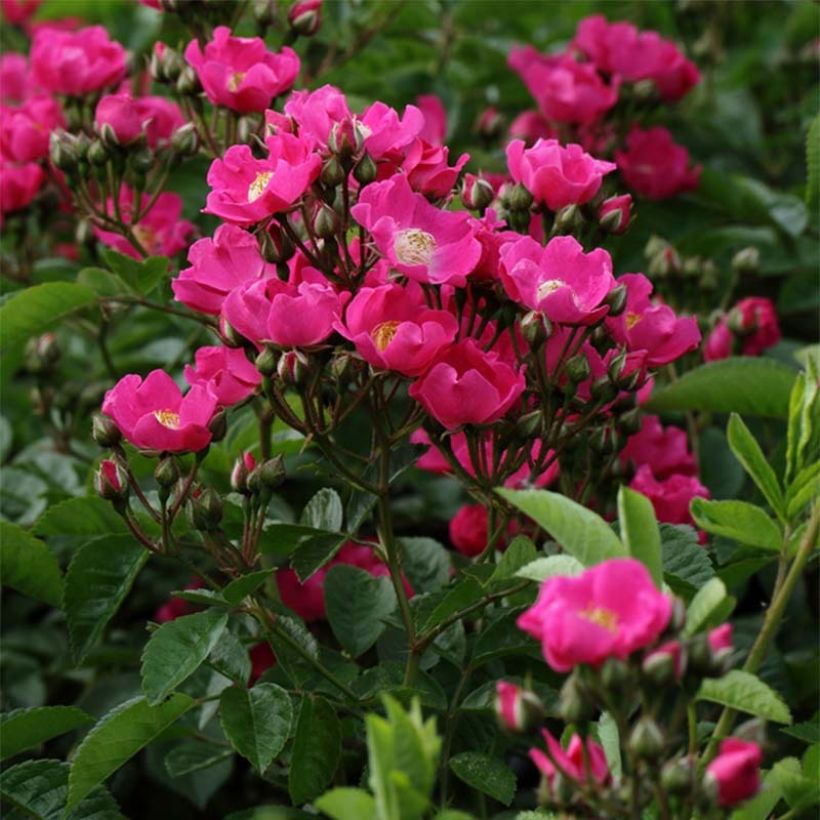

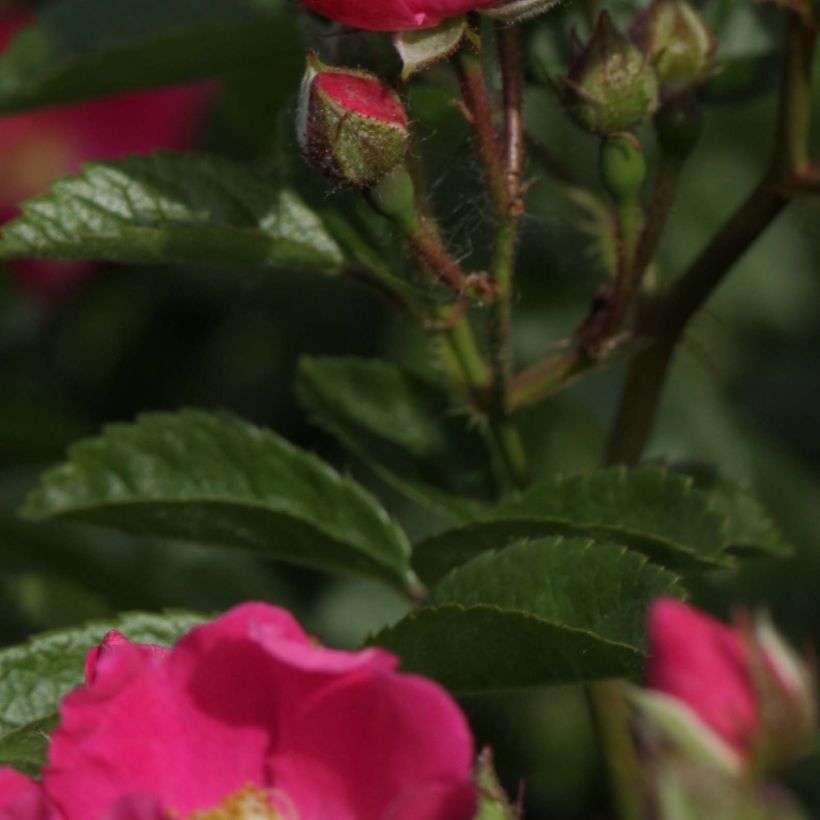

Plant habit
Flowering
Foliage
Botanical data
Rosa
x multiflora
Maria Lisa
Rosaceae
Multiflora Rose, Baby Rose, Japanese Rose, Many-flowered Rose, Seven-sisters Rose
Cultivar or hybrid
Rosa canina Laxa (4L/5L pot, Wrapped bare root)
Other Rambling Roses
Planting and care
The 'Maria Lisa' rose adapts to any type of soil, even heavy or sandy, as long as the planting is well taken care of and it doesn't lack water or nutrients. Plant it in well-prepared and well-drained ordinary soil, and in a sunny or partially shaded location, which it tolerates well. Plant it in autumn, never when it's freezing. The branches that are 2 years old are the most floriferous. It is useful to reduce the stems that have flowered the previous year to 3 or 4 buds, or pruned to 15 cm (6in). The new sturdy stems will be trained and the old ones removed if necessary. Fairly hardy, this rose can withstand temperatures down to -20°C (-4°F), and if, despite everything, after a harsh winter, the branches freeze to the ground, this climber will regrow from the base in spring. It may be useful to remove dead wood in winter and remove faded flowers if fruit formation is not desired. If necessary, a light pruning can be done in spring after the risk of frost. Rose lianas can also be allowed to grow freely if there is plenty of space available.
If you plant a climbing rose next to a living tree, the root system of the rose will compete with that of the already well-established tree. To control watering, here's a tip: plant the rose in a large container with a perforated bottom, at the base of the tree. The tree roots will not penetrate the container for at least a year. Remove the container after 1 year, for example by cutting one side, without disturbing the rose's root system. By then, the rose will have had time to develop its root system deeply and will be more resistant.
Planting period
Intended location
Care
-
, onOrder confirmed
Reply from on Promesse de fleurs
Traditional Roses
Haven't found what you were looking for?
Hardiness is the lowest winter temperature a plant can endure without suffering serious damage or even dying. However, hardiness is affected by location (a sheltered area, such as a patio), protection (winter cover) and soil type (hardiness is improved by well-drained soil).

Photo Sharing Terms & Conditions
In order to encourage gardeners to interact and share their experiences, Promesse de fleurs offers various media enabling content to be uploaded onto its Site - in particular via the ‘Photo sharing’ module.
The User agrees to refrain from:
- Posting any content that is illegal, prejudicial, insulting, racist, inciteful to hatred, revisionist, contrary to public decency, that infringes on privacy or on the privacy rights of third parties, in particular the publicity rights of persons and goods, intellectual property rights, or the right to privacy.
- Submitting content on behalf of a third party;
- Impersonate the identity of a third party and/or publish any personal information about a third party;
In general, the User undertakes to refrain from any unethical behaviour.
All Content (in particular text, comments, files, images, photos, videos, creative works, etc.), which may be subject to property or intellectual property rights, image or other private rights, shall remain the property of the User, subject to the limited rights granted by the terms of the licence granted by Promesse de fleurs as stated below. Users are at liberty to publish or not to publish such Content on the Site, notably via the ‘Photo Sharing’ facility, and accept that this Content shall be made public and freely accessible, notably on the Internet.
Users further acknowledge, undertake to have ,and guarantee that they hold all necessary rights and permissions to publish such material on the Site, in particular with regard to the legislation in force pertaining to any privacy, property, intellectual property, image, or contractual rights, or rights of any other nature. By publishing such Content on the Site, Users acknowledge accepting full liability as publishers of the Content within the meaning of the law, and grant Promesse de fleurs, free of charge, an inclusive, worldwide licence for the said Content for the entire duration of its publication, including all reproduction, representation, up/downloading, displaying, performing, transmission, and storage rights.
Users also grant permission for their name to be linked to the Content and accept that this link may not always be made available.
By engaging in posting material, Users consent to their Content becoming automatically accessible on the Internet, in particular on other sites and/or blogs and/or web pages of the Promesse de fleurs site, including in particular social pages and the Promesse de fleurs catalogue.
Users may secure the removal of entrusted content free of charge by issuing a simple request via our contact form.
The flowering period indicated on our website applies to countries and regions located in USDA zone 8 (France, the United Kingdom, Ireland, the Netherlands, etc.)
It will vary according to where you live:
- In zones 9 to 10 (Italy, Spain, Greece, etc.), flowering will occur about 2 to 4 weeks earlier.
- In zones 6 to 7 (Germany, Poland, Slovenia, and lower mountainous regions), flowering will be delayed by 2 to 3 weeks.
- In zone 5 (Central Europe, Scandinavia), blooming will be delayed by 3 to 5 weeks.
In temperate climates, pruning of spring-flowering shrubs (forsythia, spireas, etc.) should be done just after flowering.
Pruning of summer-flowering shrubs (Indian Lilac, Perovskia, etc.) can be done in winter or spring.
In cold regions as well as with frost-sensitive plants, avoid pruning too early when severe frosts may still occur.
The planting period indicated on our website applies to countries and regions located in USDA zone 8 (France, United Kingdom, Ireland, Netherlands).
It will vary according to where you live:
- In Mediterranean zones (Marseille, Madrid, Milan, etc.), autumn and winter are the best planting periods.
- In continental zones (Strasbourg, Munich, Vienna, etc.), delay planting by 2 to 3 weeks in spring and bring it forward by 2 to 4 weeks in autumn.
- In mountainous regions (the Alps, Pyrenees, Carpathians, etc.), it is best to plant in late spring (May-June) or late summer (August-September).
The harvesting period indicated on our website applies to countries and regions in USDA zone 8 (France, England, Ireland, the Netherlands).
In colder areas (Scandinavia, Poland, Austria...) fruit and vegetable harvests are likely to be delayed by 3-4 weeks.
In warmer areas (Italy, Spain, Greece, etc.), harvesting will probably take place earlier, depending on weather conditions.
The sowing periods indicated on our website apply to countries and regions within USDA Zone 8 (France, UK, Ireland, Netherlands).
In colder areas (Scandinavia, Poland, Austria...), delay any outdoor sowing by 3-4 weeks, or sow under glass.
In warmer climes (Italy, Spain, Greece, etc.), bring outdoor sowing forward by a few weeks.

































